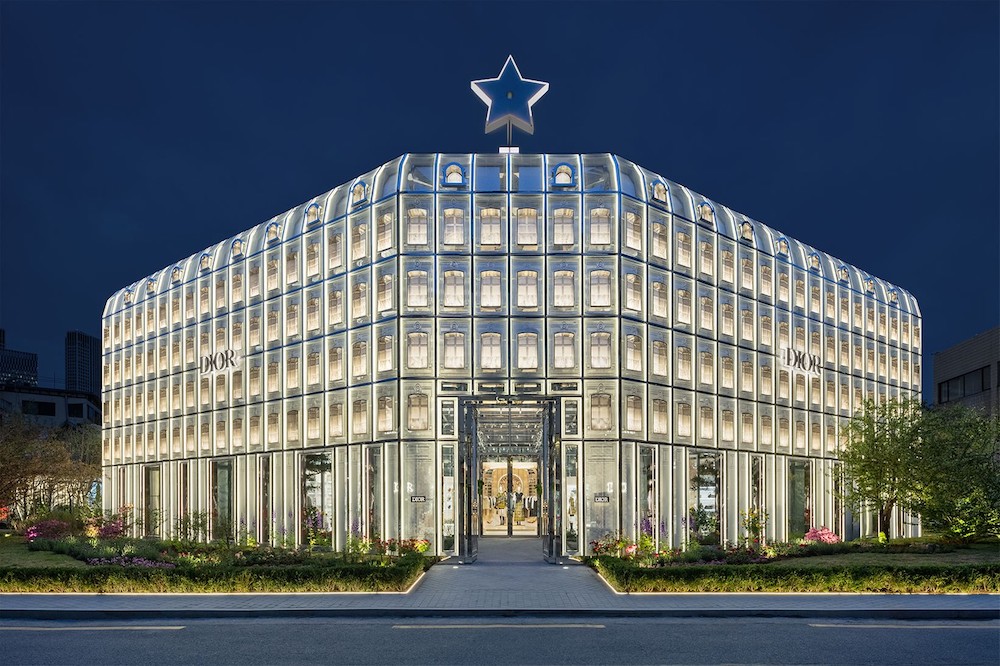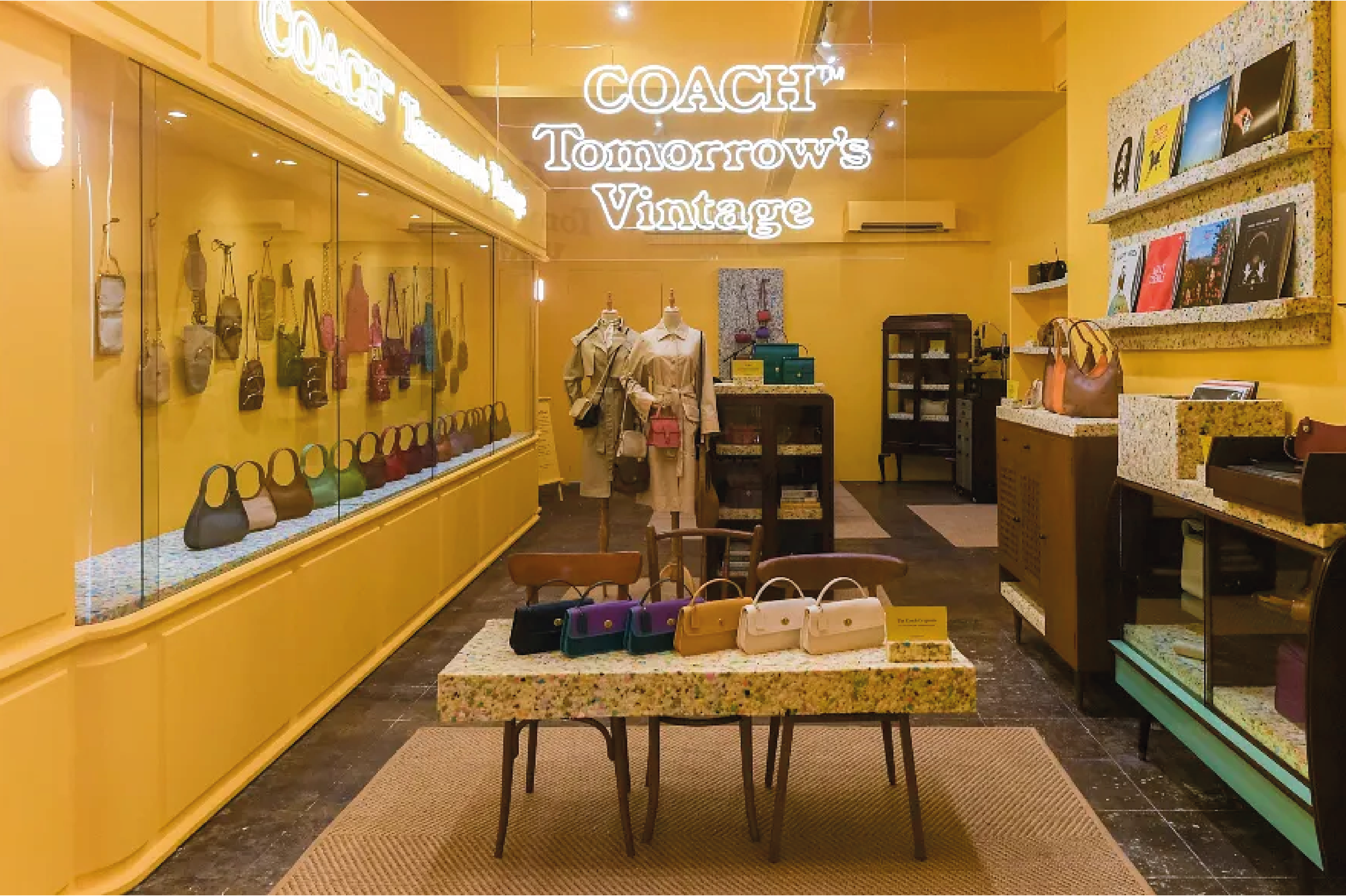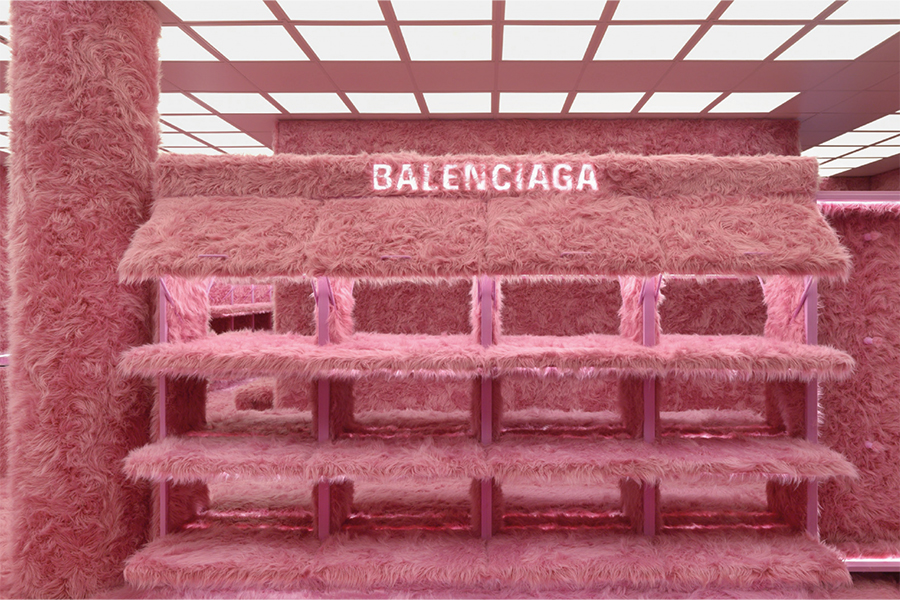Let’s get physical: Why Hyperphysical stores are this year’s biggest retail trend in Asia
Visiting the new Dior pop-up store in South Korea, located on a main strip in Seoul’s Seongsu-dong district, you wouldn’t be amiss for thinking you’ve lost your way and stumbled into Paris.
Opening its doors in late April at 7, Yeonmujang 5-gil, the massive Dior Seongsu-dong pop-up is designed to mimic Dior’s Avenue Montaigne flagship store, which only reopened in the French Capital in early March after two years of extensive renovations.
Strategically located in the “Brooklyn of South Korea”, the Dior Seongsu-dong store’s open-air design pays homage to the classy facade of Dior’s original Paris home, with glass panelling and beautiful floral details that are reminiscent of a greenhouse.
Inside the 7,500 square-foot pop-up, shoppers are privy newly showcased pieces from Dior Creative Director Maria Grazia Chiuri’s recently unveiled fall collection, which took place at Seoul’s Ewha Woman’s University, in late April, as well as the Dior Chez Moi loungewear collection, Dior book totes and Dior sneakers.
After shopping, there’s even a Dior café, which displays the immersive media art of Korean digital design company d’strict. The cafe boasts a breathtaking digital background that will visually transport patrons from metropolitan Paris to the gardens of Christian Dior’s childhood home in Granville, Normandy, in France.
Dior is one of several brands tapping into an emerging retail trend in Asia right now: hyperphysical stores.

Let’s get hyperphysical
“Hyperphysical stores take the concept of experiential retail to the next level by offering a truly sensorial and holistically memorable experience to shoppers by engaging them across various senses,” explains Olivier Gergele, EY Asean Consumer Products & Retail Leader, to RetailInAsia via email.
“The idea is that shops should no longer be shops simply for the purpose of selling, but meeting places where memories and emotions are created via a hyperphysical experience. Such concepts can be used by luxury brands to target Gen Z and younger-generation consumers or take the form of themed pop-ups that can incorporate various features like gardens, cafes, ASMR, marriage avenues, etc.”
“Such changes are not just happening on the customer side. Stores are equipped with various sensing devices, which help sense or analyse each customer’s movements in real-time and simulate for better store experiences,” adds Dong-Hyun Lee, EY Asia-Pacific Customer & Growth Leader.
“Simulation of product assortments/placement, consumer behaviours, and climate control in the store according to the weather allow the optimal experience from the consumer’s point of view, which in turn leads to brand satisfaction and business performance.”
Coach was one of the first brands to take the hyperphysical road in Asia in the last twelve months, opening its first immersive concept store in Singapore in late 2021.

Titled ‘Tomorrow’s Vintage’, the American luxury brand’s pop-up was an eco-retrospective, paying homage to Coach stores in the past. Inside the yellowed pop-up, vintage TVs showcased films featuring Coach’s renowned leather restoration specialist Debi the Restorer, promoting the brand’s sustainability push, alongside a display of Coach’s archival collection – including the iconic Ergo and Cashin bags designed by Coach’s first designer Bonne Cashin – and a selection of re-released Coach Original bags.
Playing on nostalgia, the Coach pop-up transported younger generation visitors back in time, to a simpler time, before the economic devastation of Covid-19 and digitalisation dominated daily life.
Similar to Dior, French jewellery house Van Cleef & Arpels in early February recreated the streets of Paris for a week-long immersive watchmaking exhibition open to the public, located in Sands Expo, Marina Bay Sands, in Singapore.
Instead of jewellery, there was a café, where visitors could enjoy a cup of coffee and some pastries by a recreated ‘River Seine’ and take photos with iconic Parisian landmarks. Other unique photo-ops included a flower stall, a Parisian garden setting, as well as a French opera house.
More than a pop-up, Singapore’s travel-restricted guests need not fly to Europe to be in Paris, and could forget about the global pandemic taking place in the region, even for a few hours.
Go beyond the digital
After the first wave of global lockdowns in 2020 eased, followed by a second in 2021, hyperphysical stores now hope to lure luxury shoppers back to physical stores in 2022.
Likewise, accustomed to Covid lockdowns and shopping online, shoppers are seeking an experience, not just products to buy, to get them in store.
“The Covid-19 pandemic has accelerated the transformation of the way we shop with consumers, especially the Gen Z generations, who are visiting stores with the expectation to be offered an experience going beyond the transactional process of buying,” adds Gergele.
“They are looking for a multi-sensory immersive experience that is engaging and fun. Hyperphysical stores offer a chance for consumers to engage with the brand within extremely engaging settings, building stronger brand recognition and loyalty.”
While hyperphysical retail is more about enhancing the customer experience and increasing brand recognition and accessibility, as opposed to simply selling products, sales are still at the forefront of brands’ minds.
According to GlobalData, the Asia-Pacific market bounced back last year and experienced a growth of 29.7 percent in 2021 to reach USD122 billion, or 10.8 percent above 2019 levels.
The yearly growth was attributed to a rising popularity of aspirational luxury products, increasing internet penetration among Gen Z shoppers, and the active engagement of brands on social media, according to the research firm.
When looking at social media engagement, hyperphysical stores serve as both vibrant subjects and backdrops for Instagram and TikTok, drawcards for Gen Z shoppers who are seeking new experiences and immersing themselves fully in a brand, as aspirational luxury clients, before making their first luxury purchase.

“[Hyperphysical] is a wonderous change from a physical store that was nothing more than a space where products were displayed for sale, and Gen Z is no longer impressed with that type of layout,” adds Lee. “Transforming the same space for different purposes makes the story a whole lot more interesting, as Gen Z are attracted to things they have never seen or experienced.”
Balenciaga is another brand taking the hyperphysical road. In April, the luxury brand opened a pop-up for its Le Cagole handbag, in Bangkok. A sensory overload of touch and sight, the store features a plush shaggy pink faux fur covering the wall, floors, shelves and furniture inside.
“Balenciaga serves as a good example of the hyperphysical store. The brand showcased a spectacular decoration in the retail shop as if shoppers came to a museum or wonderland. The space creates a desire to experience things that have never been seen before, rather than to just browse and purchase products, customers can share that experience with others. Furthermore, that playful experience often leads to moments that are popular on TikTok and Instagram. Mulberry’s pop-up store in Seoul, and Bottega Veneta’s a maze installation in Seoul, are just some of the examples of hyperphysical stores.”
Before opening hyperphysical retail stores and engaging with the sensory needs of shoppers, brands must still navigate Asia’s everchanging social and economic headwinds While 2021 looked like a the region was on the road to recovery for Covid, snap lockdowns in China and Hong Kong in 2022, are causing havoc for brands and retailers.
This March and April, Beijing’s zero-Covid policy forced major cities like Shanghai into lockdown, a move which saw Chinese retail sales in April plunge 11 percent to the lowest point in almost two years, according to the National Bureau of Statistics.
Meanwhile, retail traffic in Hong Kong has dropped 40 percent from December to February, as a surge in coronavirus cases and tighter restrictions continue to batter the retail sector, according to the Hong Kong Retail Management Association.
The recent Covid-related lockdowns have also negatively impacted luxury sales, as seen in the recent earnings updates from Kering, LVMH and Richemont, the world’s three largest luxury groups, each reporting sales lags in their respective Chinese markets for the March quarter.
China’s Covid woes are another reason markets like Seoul, Singapore and Bangkok, traditionally seen as secondary markets to Chinese cities, are becoming increasingly popular for luxury brands to rollout hyperphysical retail experiences in Asia, a region that is far from returning to its pre-pandemic international travel levels, according to the International Air Transport Association.
Air travel in the region during the first quarter of 2022 was just 17 percent of 2019 levels – compared with about 60 percent in Europe, North America, and Latin America, said the IATA in a press conference in May.
More reason for luxury brands to bring a little taste of Europe to Asian shoppers and their home cities, via the hyperphysical store.
Following Dior’s touchdown in Seoul in April, Louis Vuitton opened a month-long pop-up restaurant at its flagship in Seoul’s Gangnam district in May. The French culinary experience was overseen by Korean-born French chef Pierre Sang Boyer, who owns several restaurants in Paris, and comes two years after the French luxury giant opened its first Vuitton café and restaurant in 2020 at its flagship boutique in Osaka, Japan. That was followed up last year with an LV Café and chocolate shop at its new seven-story Ginza Namiki flagship in Tokyo, inspired by France and the City of Lights.
As the saying goes, ‘Paris is always a good idea’.




